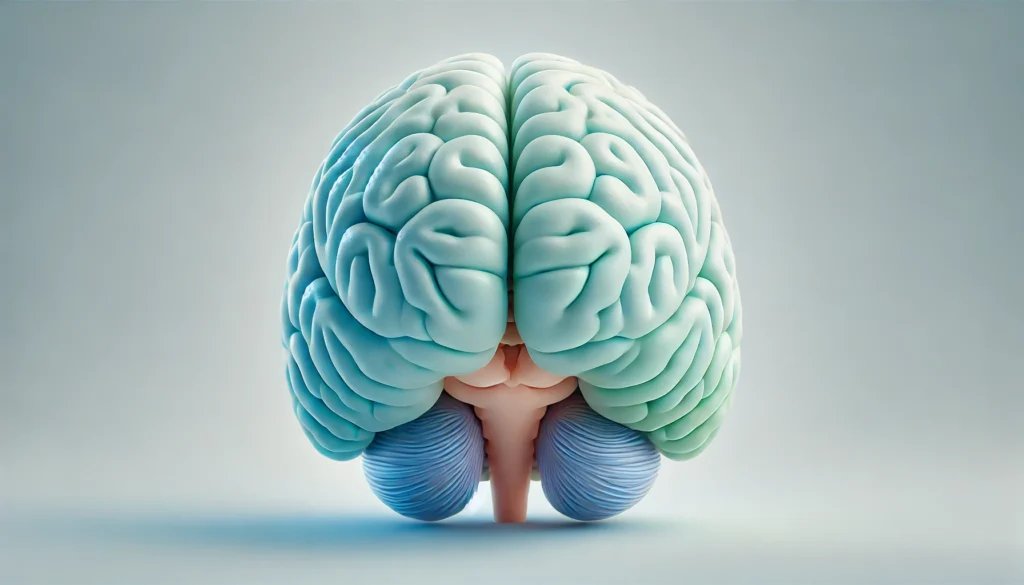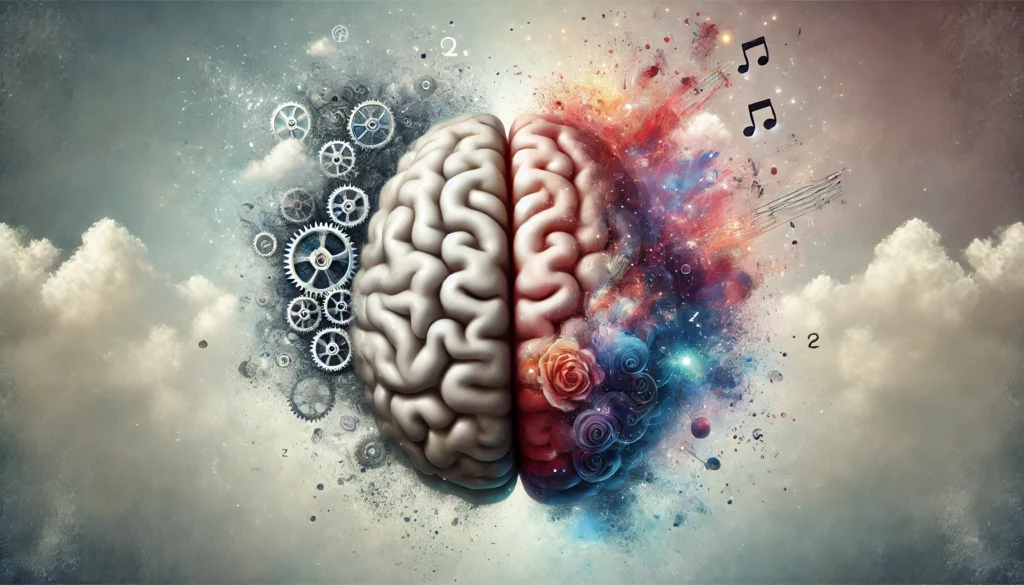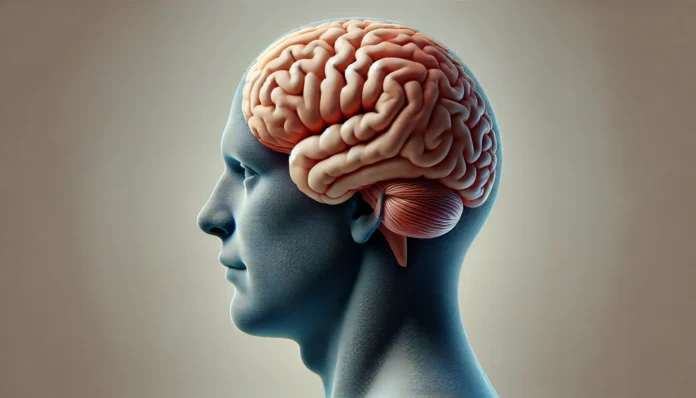Understanding the structure and function of the brain is essential for those seeking to protect cognitive health and optimize longevity. Among the brain’s many parts, the cerebrum stands as the largest portion of the brain and plays a pivotal role in determining how we think, feel, move, and interact with the world around us. Its two hemispheres—the left and right sides—are distinct in the types of processing they handle, and their dynamic interplay forms the foundation for every conscious and unconscious experience we have. When we ask questions like “what does the left side of the brain control?” or “what is the right side of the brain responsible for?” we are delving into the profound duality of human cognition. To understand this duality, one must explore cerebrum anatomy in depth, from where in the brain the cerebrum is located to how each hemisphere contributes to overall function. In doing so, we gain insight not only into how the brain works but how to support its health for years to come.
You may also like : Best Things for Brain Health: Expert-Backed Strategies to Keep Your Mind Sharp
The Cerebrum: The Brain’s Command Center
The cerebrum brain region is the seat of conscious thought, sensory interpretation, voluntary movement, and higher-order cognitive functions. As the largest part in the brain, the cerebrum accounts for roughly 85% of total brain weight and volume. When viewed from the side, this region dominates the uppermost area of the brain, and in anatomical terms, it is what one sees when looking at a labeled diagram or a brain sideways. The structure of cerebrum anatomy is complex, comprising a thick outer layer of gray matter called the cerebral cortex and an inner layer of white matter that connects different brain regions through a vast network of neural pathways.
Where the cerebrum is located is a common question among those first exploring neuroscience. It sits atop the brainstem and the cerebellum, extending across both hemispheres. Pertaining to the largest part of the brain, its unique geography allows it to coordinate nearly every action and decision we make. Unlike the cerebellum, which primarily manages balance and motor coordination, the cerebrum and cerebellum work together to refine movement and ensure efficient bodily function. However, the cerebrum takes the lead in intellectual activities, from analyzing complex data to recalling cherished memories.
Structure of the Cerebrum and Its Functional Implications
The structure of the cerebrum is marked by grooves (sulci) and ridges (gyri) that increase surface area and enhance neural connectivity. Divided longitudinally by the medial longitudinal fissure, the cerebrum consists of two hemispheres—each with four primary lobes: frontal, parietal, temporal, and occipital. Each lobe has specific duties, but all work synergistically to facilitate cognition and behavior. The frontal lobe governs executive functions, such as planning, decision-making, and regulating social behavior. The parietal lobe processes tactile information, the temporal lobe handles auditory signals and memory, while the occipital lobe is responsible for visual perception.
Understanding the structure of cerebrum architecture is crucial for grasping why different sides of the brain contribute differently to overall function. While both hemispheres are anatomically similar, their functionalities often display asymmetry. This hemispheric specialization leads to the commonly discussed dichotomy regarding what the left and right side of the brain control. For instance, although each hemisphere controls the opposite side of the body—a phenomenon known as contralateral control—the deeper functions they support diverge in meaningful ways.
What Does the Left Side of the Brain Control?
Much of our understanding of what the left side of the brain controls originates from neurological studies on brain damage and neuroimaging research. The left hemisphere is typically associated with logical reasoning, analytical thinking, and language processing. When people ask “what does the left part of the brain control?” they are often referring to its dominant role in speech, reading, writing, and mathematical abilities. This hemisphere houses Broca’s area and Wernicke’s area, two critical regions involved in language production and comprehension, respectively.
The left side of brain functions also include sequential reasoning and fine motor skills, especially in right-handed individuals. As such, left hemisphere damage can lead to conditions like aphasia or apraxia, significantly impairing communication and motor coordination. Moreover, when considering whether the left side of brain controls the right side of the body, the answer is a resounding yes. This contralateral organization further illustrates the complexity of cerebrum anatomy and underscores why understanding this brain region is vital to clinical practice and health maintenance.

What Is the Right Side of the Brain Responsible For?
The right side of the brain functions in ways that complement, rather than duplicate, those of the left hemisphere. When asked, “what does the right side of the brain control?” or “what is the right side of the brain responsible for?” experts often point to creativity, spatial awareness, and emotional interpretation. The right hemisphere processes information holistically and contextually, making it essential for recognizing faces, interpreting music, and understanding metaphors and tone of voice.
Additionally, the right side of brain controls visual-spatial tasks, such as navigating a room, assembling puzzles, or appreciating art. While it does not typically house language centers, the right brain—as it is sometimes casually called—plays a key role in nonverbal communication and emotional expression. People with right hemisphere damage may struggle with visual neglect, impaired facial recognition, or difficulties grasping humor and sarcasm. These challenges reveal how the largest section of the brain influences not only cognition but also social interaction and empathy.
Hemispheric Communication: The Role of the Corpus Callosum
To understand the collaborative nature of the brain, it is essential to ask what connects the left and right hemispheres of the brain. The answer lies in the corpus callosum, a thick band of nerve fibers that enables communication between both sides. Without this bridge, the hemispheres would operate in isolation, severely limiting integrated brain function. Individuals with a severed corpus callosum—whether due to surgery or congenital conditions—often exhibit split-brain phenomena, where each hemisphere behaves independently, sometimes leading to startling cognitive effects.
This interconnectivity allows the brain to perform complex tasks that require the coordination of both logical and intuitive thinking. For instance, reading a poem and appreciating its emotional depth involves both the linguistic prowess of the left hemisphere and the emotional nuance of the right. Thus, exploring cerebrum anatomy reveals a nuanced dance between specialization and integration—a harmony essential for optimal brain health.
Implications of Cerebral Lateralization for Brain Health
The phenomenon of cerebral lateralization, where one hemisphere becomes more specialized in certain functions, is not static. Neuroplasticity allows the brain to rewire itself in response to injury or experience. This capacity means that, while the left side of brain controls language in most people, the right hemisphere can sometimes compensate after injury. Understanding this adaptability is crucial for developing effective therapies for stroke, trauma, and neurodegenerative conditions.
Moreover, training specific functions attributed to one hemisphere can influence overall brain performance. For example, activities like learning a new language, solving puzzles, or playing a musical instrument can stimulate both hemispheres, enhancing the overall connectivity within the largest portion of the brain. Recognizing where is the location of the cerebrum and what does the left side of the brain do versus what does the right side of the brain function allows for targeted cognitive exercises that bolster memory, attention, and emotional regulation.
The Cerebrum and Cognitive Aging
As we age, the cerebrum undergoes structural and functional changes that can affect memory, reasoning, and processing speed. However, understanding what the left and right side of the brain control helps identify early signs of decline and tailor interventions accordingly. While normal aging may lead to slower cognitive processing, more severe conditions such as Alzheimer’s disease disproportionately affect the largest section of the brain, especially in areas tied to language, memory, and executive function.
Longevity strategies should include lifestyle practices that support both hemispheres of the cerebrum. Physical exercise, particularly aerobic activity, has been shown to increase gray matter volume and enhance connectivity in regions of the brain labeled cerebrum. Cognitive training, mindfulness, and social engagement also promote resilience in cerebral networks. By appreciating the structure of cerebrum and how it relates to specific brain functions, individuals can make informed choices to safeguard cognition into advanced age.

Where in the Brain Is the Cerebrum Located and Why It Matters
Understanding where in the brain the cerebrum is located is more than a matter of anatomical curiosity. Its location at the topmost region allows it to integrate signals from virtually every part of the nervous system. From processing sensory information to initiating voluntary actions, the cerebrum’s strategic position ensures it serves as the command hub for physical and mental activity.
The cerebrum’s position above the brainstem and cerebellum enables it to relay and interpret information with remarkable speed and precision. This layout facilitates its role in conscious awareness, complex decision-making, and higher-order thinking. When brain imaging scans show the brain labeled cerebrum, clinicians can assess damage or abnormalities that may affect a wide array of abilities. Thus, knowing the exact location and function of the cerebrum is indispensable for both diagnosis and recovery in neurological care.
How Lifestyle Shapes Cerebral Function Over Time
Long-term brain health depends on how well we nourish and challenge the cerebrum. Both hemispheres require stimulation to maintain plasticity and prevent cognitive decline. Activities such as journaling, which exercises the left side of brain functions like language and logic, should be balanced with right-brain pursuits like painting or dancing, which engage creativity and spatial awareness. This holistic approach ensures that neither hemisphere is underutilized.
Furthermore, dietary choices play a substantial role. Omega-3 fatty acids, antioxidants, and B vitamins have been linked to improved brain volume and function, particularly in areas of the cerebrum brain responsible for memory and learning. Sleep, stress management, and regular social interaction also significantly affect the health of the cerebrum and cerebellum. Together, these practices reinforce the resilience of the brain’s most vital structures.
Neuroplasticity and Hemispheric Adaptation
One of the most promising insights from modern neuroscience is that the cerebrum can adapt in response to both damage and learning. This neuroplasticity means that if one side of the brain is impaired, the other side can often take over some of its functions. For instance, after a left hemisphere stroke, patients can sometimes regain speech by recruiting right-hemisphere regions through intensive therapy. This adaptability is particularly evident in younger brains but remains present throughout life.
By understanding what the left side of the brain function entails and how the right hemisphere contributes to perception and emotion, rehabilitation specialists can tailor interventions that promote recovery. Encouraging cross-hemispheric integration through bilateral tasks like playing piano or practicing martial arts can further enhance neural flexibility. These strategies illustrate how a deep understanding of cerebrum anatomy supports not only recovery but also lifelong cognitive optimization.
Frequently Asked Questions: Understanding the Left and Right Side of the Brain and Cerebrum Anatomy
1. How does the cerebrum influence emotional processing and personality over time?
Emotional regulation and personality development are deeply rooted in the structural and functional complexity of the cerebrum. While the limbic system initiates emotional responses, the frontal lobes of the cerebrum brain, especially in the left hemisphere, help modulate those responses based on social norms and reasoning. The right side of brain functions—particularly in the prefrontal cortex—play a role in empathy, facial recognition, and emotional nuance, adding dimension to interpersonal understanding. Over time, life experiences and neuroplastic changes in the cerebrum anatomy reshape how emotions are processed, often making older adults more emotionally resilient. Because the largest portion of the brain governs both emotion and logic, changes in this area are frequently linked to shifts in personality, especially during aging or after neurological trauma.
2. Can brain training apps really enhance the function of the left and right brain?
Many brain training apps claim to boost cognition, but their effectiveness often depends on how well they engage the different functions the left and right side of the brain control. Apps that focus on language, arithmetic, or logical puzzles primarily activate the left side of brain functions. In contrast, those that involve pattern recognition, spatial navigation, or creativity are more likely to stimulate right side of the brain functions. For optimal results, look for platforms that incorporate exercises for both hemispheres, enhancing bilateral cerebrum brain performance. While brain training alone may not drastically change IQ, consistent use alongside lifestyle habits can strengthen neural networks in the cerebrum and cerebellum.
3. How does bilingualism affect the structure of the cerebrum?
Bilingual individuals often show enhanced density in specific areas of the cerebrum anatomy related to language and executive control. Because the left side of the brain controls grammatical structure and verbal fluency, it undergoes more robust development in multilingual speakers. However, what is the right side of the brain responsible for in this context? It helps interpret contextual cues, tone, and metaphor—making it essential in fluid, nuanced communication. Research also suggests that managing multiple languages delays age-related cognitive decline by keeping both hemispheres active. These effects are especially evident in the largest section of the brain, where in the brain the cerebrum is located, as it serves as a hub for language integration and switching.
4. What role does the cerebrum play in developing moral reasoning?
Moral reasoning is a sophisticated function that engages both cognitive logic and emotional empathy, requiring collaboration between the left and right side of the brain functions. The left hemisphere helps articulate ethical principles and apply them logically to complex situations. Meanwhile, the right hemisphere integrates emotional salience and social consequences, aspects that are crucial for compassionate decision-making. Studies show that individuals with damage to the ventromedial prefrontal cortex—an area within the cerebrum brain—may struggle with moral judgment despite normal intellectual function. Understanding the structure of cerebrum and how it supports this process can enhance therapeutic strategies for individuals with neuropsychiatric conditions.
5. Does handedness affect which hemisphere becomes dominant?
Yes, handedness plays a significant role in hemispheric dominance. In roughly 90% of right-handed individuals, the left side of the brain controls language and fine motor coordination. However, among left-handed people, this distribution is more variable, with a higher likelihood of right-hemispheric or bilateral language dominance. While the largest portion of the brain remains structurally symmetrical, functional asymmetries are influenced by both genetics and early environmental exposure. These findings offer insight into where is the location of the cerebrum most active during skill development and how the right brain called into action may differ from person to person.
6. Can meditation and mindfulness practices improve the health of the cerebrum?
Absolutely. Regular mindfulness and meditation have been shown to increase cortical thickness in regions of the cerebrum anatomy, particularly in the prefrontal cortex and hippocampus. These areas are associated with attention, emotional regulation, and memory. Although mindfulness is often considered a right-brain activity due to its association with self-awareness and present-moment focus, it also strengthens the left hemisphere’s capacity for self-regulation. This bilateral stimulation supports overall brain health, especially in the brain labeled cerebrum on imaging scans. Additionally, since the cerebrum and cerebellum coordinate stress responses, mindfulness indirectly improves both regions by reducing allostatic load.
7. How does the cerebrum adapt after traumatic brain injury (TBI)?
The cerebrum has remarkable capacity for adaptation through neuroplasticity, even after significant injury. Depending on where in the brain the cerebrum is located when injured, different functions may be compromised—whether related to speech, memory, or motor coordination. Rehabilitation often focuses on whether the left side of brain controls functions that can be rerouted through the right hemisphere, or vice versa. In cases where the right side of the brain functions are disrupted, visual-spatial and emotional cues may require retraining. Understanding what connects the left and right hemispheres of the brain—the corpus callosum—can help guide therapeutic approaches that promote cross-hemispheric compensation.
8. Why do some individuals have better spatial memory than others?
Superior spatial memory is often linked to stronger development in regions the right side of brain controls, particularly the parietal and occipital lobes. While the left side of the brain controls more sequential memory processes, the right hemisphere excels in spatial orientation and mental mapping. Individuals who frequently engage in activities like orienteering, architecture, or even certain video games often show greater activity in the parts of the cerebrum brain involved in spatial reasoning. These abilities are tightly linked to the structure of cerebrum regions responsible for integrating visual and kinesthetic inputs. Differences in neurodevelopment, lifestyle, and training can all influence where is the cerebrum most active in this regard.
9. How does sleep impact the functional integrity of the cerebrum?
Sleep plays a critical role in preserving the structural and functional health of the largest part in the brain. During deep sleep, the brain clears metabolic waste, consolidates memory, and rebalances neurotransmitter systems—processes that are largely coordinated by the cerebrum and cerebellum. Different sleep stages activate specific hemispheric regions, with REM sleep showing more activity in right side of the brain functions related to dreaming and emotional processing. Chronic sleep deprivation disproportionately affects the frontal lobes, impairing both decision-making and language—key functions the left side of brain controls. Ensuring quality sleep is essential for maintaining the structure of cerebrum networks and long-term cognitive resilience.
10. What emerging technologies are being used to study the cerebrum more precisely?
Recent advances in neuroimaging and neuromodulation are revolutionizing how we study the cerebrum anatomy and function. Functional MRI (fMRI) allows researchers to observe real-time brain activity, highlighting which areas of the largest section of the brain are engaged during specific tasks. Transcranial magnetic stimulation (TMS) and transcranial direct current stimulation (tDCS) can now target regions the left and right side of the brain control to enhance or inhibit activity. These technologies are shedding new light on what does the left side of the brain function in versus what does the right side of the brain function in across diverse populations. As research evolves, we may soon be able to fine-tune cognitive training programs based on individualized cerebrum brain activity maps.

Conclusion: Supporting Cerebral Health for Lifelong Cognitive Vitality
Exploring cerebrum anatomy and understanding what the left and right side of the brain control reveals a complex, dynamic system that governs everything from speech to sensation, logic to emotion. The cerebrum, the largest portion of the brain, serves as the master coordinator of conscious experience and physical action. By examining where the cerebrum is located, how each hemisphere specializes in different cognitive domains, and how the cerebrum and cerebellum interact, we can make informed decisions to support long-term brain health.
As we consider the questions “what does the left side of the brain do?” and “what is the right side of the brain responsible for?” we uncover opportunities to cultivate our mental capacities through targeted exercises, dietary support, and lifestyle habits that nourish both hemispheres. Understanding what connects the left and right hemispheres of the brain—and how this connection fosters integrated thinking—helps us appreciate the power of balance in cognition.
brain hemisphere functions, neuroplasticity and brain health, brain lobes and their functions, cerebral cortex activity, brain dominance theory, emotional regulation and the brain, brain health and longevity, cognitive function and aging, brain connectivity pathways, executive function and the brain, brain-based learning strategies, neurocognitive rehabilitation, bilingual brain benefits, right brain creativity, left brain logic processing, motor cortex function, brain imaging techniques, cognitive training tools, mindfulness and brain structure, enhancing memory through brain exercises
Further Reading:
Neuroscience: Looking at the Left and Right Hemispheres of the Brain
The Difference Between the Left and Right Brain
Disclaimer
The information contained in this article is provided for general informational purposes only and is not intended to serve as medical, legal, or professional advice. While Health11News strives to present accurate, up-to-date, and reliable content, no warranty or guarantee, expressed or implied, is made regarding the completeness, accuracy, or adequacy of the information provided. Readers are strongly advised to seek the guidance of a qualified healthcare provider or other relevant professionals before acting on any information contained in this article. Health11News, its authors, editors, and contributors expressly disclaim any liability for any damages, losses, or consequences arising directly or indirectly from the use, interpretation, or reliance on any information presented herein. The views and opinions expressed in this article are those of the author(s) and do not necessarily reflect the official policies or positions of Health11News


